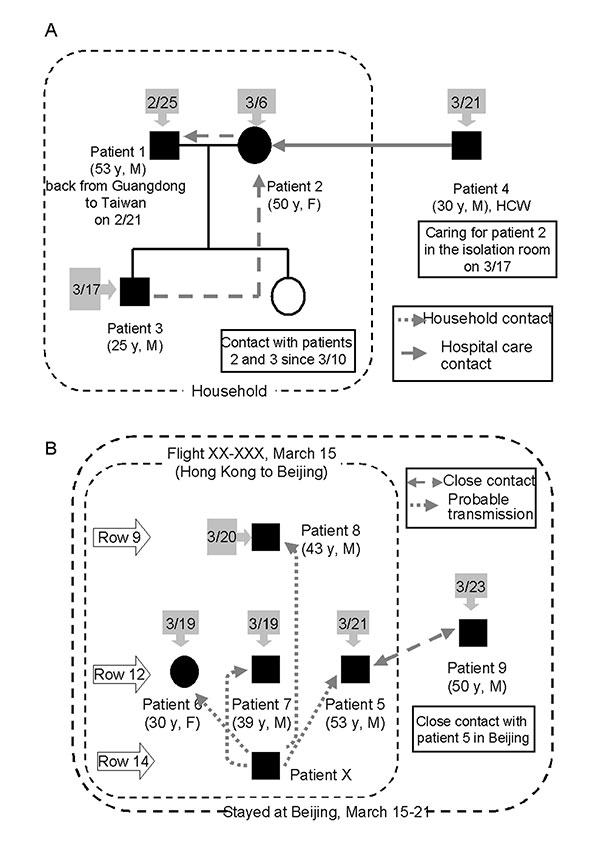Volume 10, Number 3—March 2004
Dispatch
Patient Data, Early SARS Epidemic, Taiwan
Figure 1

Figure 1. Two clusters involving nine patients with severe acute respiratory syndrome (SARS) who were initially treated at National Taiwan University Hospital. A: One cluster was composed of four patients; two acquired SARS through household contact with an index patient, who had returned from Guangdong Province in China; the fourth was a healthcare worker caring for patient 2. B: The second cluster was composed of four fellow passengers in an airplane (patients 5–8), who sat near a symptomatic patient with SARS (patient X) within the airplane, and one patient (patient 9), who had subsequent close contact with patient 5. Square, male patient; circle, female patient; black, probable case of SARS; blank, healthy person; shading, date of the onset of symptoms; HCW, healthcare worker.
1Pan-Chyr Yang and Chuan-Liang Kao contributed equally to this article.
2The SARS Research Group of National Taiwan University College of Medicine and National Taiwan University Hospital includes the following members: Ding-Shinn Chen, Yuan-Teh Lee, Che-Ming Teng, Pan-Chyr Yang, Hong-Nerng Ho, Pei-Jer Chen, Ming-Fu Chang, Jin-Town Wang, Shan-Chwen Chang, Chuan-Liang Kao, Wei-Kung Wang, Cheng-Hsiang Hsiao, and Po-Ren Hsueh.